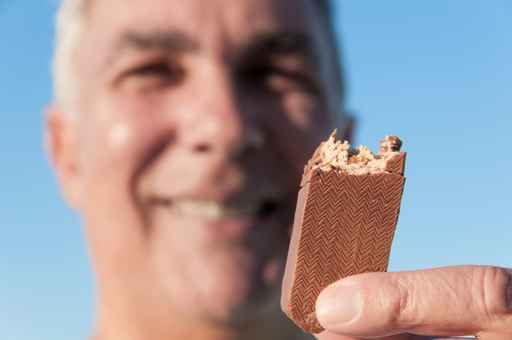
Wellness and healthy eating may be in vogue, but more Australians than ever are regularly eating chocolate, according to the results of a new Roy Morgan survey.
In 2016 around 68.4% of the population aged more than 14 years, equivalent to 13.5 million people, ate a chocolate product in an average four week period: A rise of three per cent.
The shift from 65.3% in 2013 represents a jump of one million Australians who have introduced chocolate into their diets in the past three years.
Chocolate bars were most popular, consumed by 53.2% of Australians (up from 47.9% in 2013), while chocolate blocks accounted for 41.8% (up from 40.2%) and boxed chocolates 19.2% (up from 16.5%).
Cadbury proved to be the market leader across the chocolate categories for Australians, with the 50g bar eaten by 17.7% of the over-14 population at least once a month.
KitKat followed as the second national favourite with 13.9%; Cherry Ripe with 11.2%; Mars Bars at 9.9%; and Snickers in fifth place with 6.6%.
The Cadbury block, a major seller in the grocery sector, led the competition by a huge margin, eaten by 30.2% of Australians at least once a month. This was followed by Lindt (8.6%), Nestlé (6.9%), Kitkat (4.1%), and Toblerone (2.1%).
Cadbury Favourites came in as the most popular boxed chocolate product, with an average of 610,000 Australians estimated to be buying it once every four weeks.
In second and third places Lindt Lindor Balls and Ferrero Rocher had the most repeat custom, with 74.2-74.3% of buyers respectively eating the same brand every four weeks.
Lindt scored fourth place with 485,000 monthly buyers (71.9% brand loyalty), and Australiana classic Cadbury Roses came in fifth with 335,000 (63.5% brand loyalty).
Roy Morgan Research CEO Michele Levine said the act of sharing gave boxed chocolates a special appeal thanks to their experiential offer.
“Not only do those buying it for others experience the satisfaction of brightening someone’s day, but they’re frequently rewarded for their efforts when the receiver offers them their pick of the box,” she said.
“Naturally, this is not always the case: some people buy boxed chocolates for themselves, while others (especially around Easter and Christmas) may buy a box for a friend or loved one and receive their own box from someone else—but there’s no doubt that sharing these chocolates adds to the enjoyment.
“In today’s retail landscape, with its gradual shift away from buying ‘things’ in favour of experiences, boxed chocolate offers the best of both worlds.”
A new report from Play Market Research has suggested that increased Australian demand for premium chocolate products had driven revenue growth in the category, despite weakening consumer demand for mass-produced products.
With a need for producers to focus on new product development and innovation, Mondelez International’s head of global innovation Gil Horsky recently said that the focus on manufacturing technology would become stronger, and that it was important to look to forward-thinking regions.
“Every food category has one region or geography where the most innovative future trends show up first,” he said.
“In chocolate, it’s the Nordic and Scandinavian countries that are five years ahead.”
Both Mondelez and Nestlé have led the chocolate innovation charge in Australian channels, with Mondelez’s Cadbury Oreo products proving extremely popular, and Nestlé’s dual origin dark KitKat and KitKat Duos demonstrating a tighter focus on premium products and innovation.

